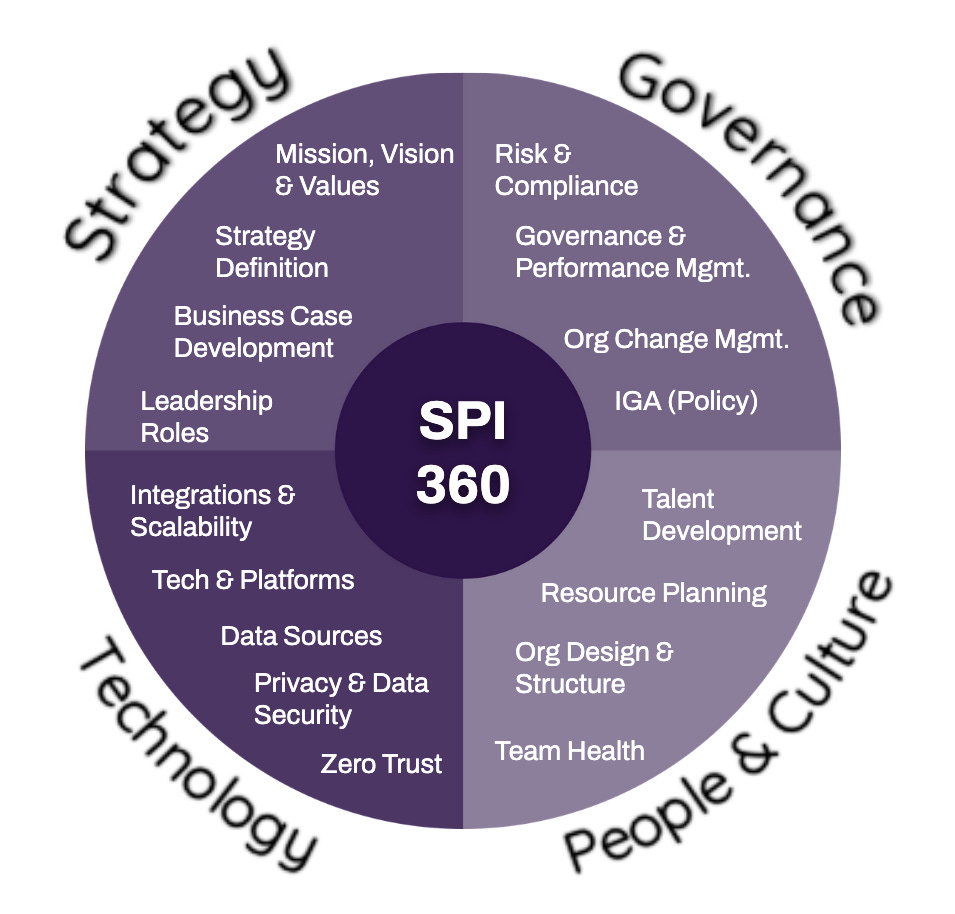Governance Should Be a Living Doctrine — So Why Are We Measuring It Like It's Dead?
Beyond static scorecards: How Strategic Performance Intelligence transforms governance measurement for modern CISOs
A few days ago I asked: does your governance actually work?
Here's a tougher question: how would you even know?
The CCISO Certified Chief Information Security Officer All-in-One Exam Guide (2020) calls governance a "living doctrine"—something that evolves with your organization, adapts to new threats, and aligns with shifting business priorities. But here's what no one says out loud: Most organizations are measuring governance like it's dead. Stuck in last quarter's PowerPoint. Buried in a maturity model that hasn't been updated since 2019. Reduced to a dashboard that shows the same green checkmarks month after month, telling you nothing about what's actually happening beneath the surface.
Governance Is a Living System. Your Measurement Approach Should Be Too.
The CCISO All-in-One Guide gets the philosophy right. It emphasizes that CISOs should define a security charter that evolves with the organization, demonstrates clear alignment with business goals, and shows measurable progress. It even calls for measuring governance ROI and performance—not just controls and compliance.
The spirit of that guidance? Spot on. The tools we use to execute it? Still trapped in 2010.
We're using balanced scorecards designed for manufacturing plants. Maturity models that assume linear progression. Static dashboards that report on the past instead of informing the future. Excel spreadsheets masquerading as strategic intelligence.
Then we wonder why board conversations feel like theater. Why security investments are impossible to justify in business terms. Why the same issues resurface after every incident review, despite our "lessons learned" sessions.
The Dangerous Illusion of Measurement
Here's how most organizations "measure" governance today. They check whether activities happened:
Did we review the security charter this year? ✅
Do we track open risk items in a register? ✅
Did we present metrics to the board quarterly? ✅
Is our maturity score improving year-over-year? ✅
Congratulations. You've proven that meetings occurred and documents exist.
But these checkbox metrics mask critical realities:
How quickly governance adapts when business priorities shift
Whether your security teams have genuine strategic clarity
Where organizational entropy is building silently
If the governance model itself creates value or just compliance theater
When real pressure hits—during an M&A, a sophisticated attack, or a strategic pivot—these surface measurements offer no guidance. Governance collapses precisely when leadership needs it most.
What Living Governance Actually Feels Like
At its best, governance isn't a compliance burden or administrative overhead. It's an enterprise capability—a strategic muscle that strengthens with use, flexes under pressure, and builds organizational resilience.
Living governance should:
Surface strategic misalignments before they become critical failures
Guide investment decisions with real-time business context
Connect cybersecurity outcomes directly to enterprise value
Improve your ability to lead through uncertainty and change
But achieving this requires fundamentally rethinking how we measure and manage governance. Static assessments and backward-looking metrics won't cut it. You need intelligence systems designed for dynamic environments.
Enter Strategic Performance Intelligence: The SPI 360 Approach
This is where Strategic Performance Intelligence changes the game. SPI 360 wasn't built as another dashboard or GRC platform. It's a strategic leadership system designed for the complexity and velocity of modern enterprise security.
1. Continuous Strategic Alignment, Not Annual Reviews
Your security program operates in a dynamic business environment. Market conditions shift. Threats evolve. Priorities change quarterly. SPI 360 maintains live alignment between governance structures and enterprise goals—not through annual reviews, but through continuous intelligence gathering and pattern recognition.
2. Value Creation Metrics That Matter
Forget vanity metrics and meaningless percentages. SPI 360 translates governance effectiveness into business language that resonates in the boardroom. It surfaces the actual impact of governance improvements on risk reduction, operational efficiency, and strategic agility—with data that CFOs and CEOs actually care about.
3. Early Warning Systems for Governance Drift
Where is organizational energy being wasted? Which governance processes are creating friction instead of value? SPI 360 detects weak signals and emerging patterns before they cascade into systematic failures. It's the difference between preventing governance breakdown and explaining it afterward.
4. Adaptive Response to Strategic Shocks
Whether facing an acquisition, responding to a breach, or navigating leadership transitions, SPI 360 provides leaders with a live system for rapid recalibration. No more scrambling to update static documents or create emergency dashboards. The intelligence is already there, ready for strategic decision-making.
5. Enterprise-Wide Visibility Without Information Overload
Governance touches every corner of your organization—security, IT, legal, operations, finance. SPI 360 creates shared visibility across stakeholder groups without drowning them in data. Each leader sees what matters for their decisions, while maintaining enterprise coherence.

From Static Documents to Living Intelligence
Let's face an uncomfortable truth: that beautifully crafted governance framework sitting in SharePoint? The one that took six months to develop and get approved? It became obsolete the day after the board signed off.
What you need isn't better documentation. You need living intelligence that evolves with your organization, learns from your operations, and strengthens your leadership.
That's the transformative gap SPI 360 fills.
Because governance isn't a one-time declaration captured in a PDF. It's a living discipline that requires continuous sensing, adaptation, and evolution. And it's time we started measuring it like one.
Modern enterprises don't need more governance frameworks. They need governance intelligence—systems that transform static policies into dynamic capabilities, converting compliance obligations into competitive advantages.
Ready to Bring Your Governance to Life?
If you're tired of measuring governance like it's a corpse instead of a living system—if you're ready to transform compliance theater into strategic capability—it's time to explore Strategic Performance Intelligence.
Ready to discover what your governance system can really do? Let's map the system and build a stronger foundation for what comes next.
Book a Strategy Call | SPI 360 Demo
Because the best time to evolve your governance measurement was yesterday. The second best time is now.




